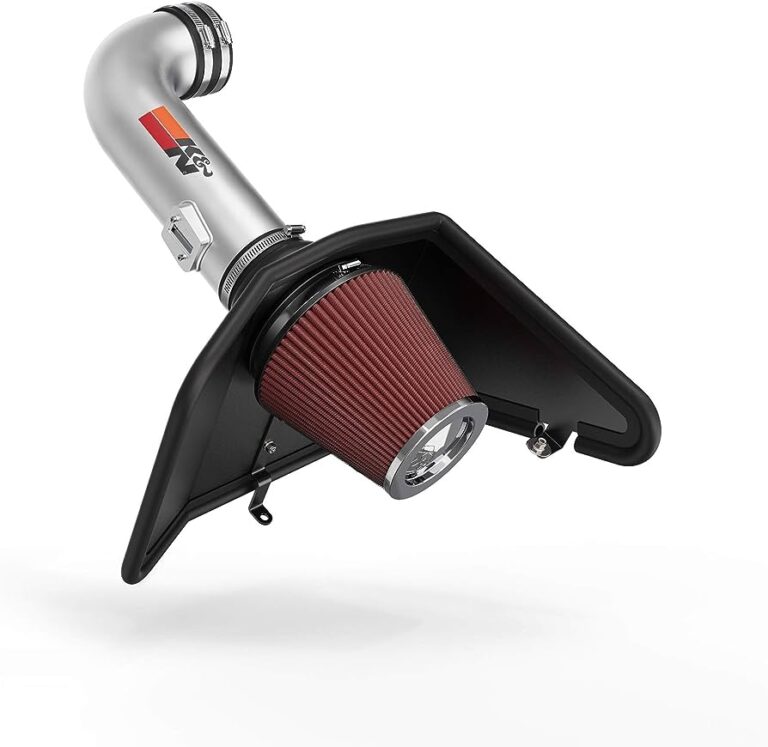Can You Drive Without a Cat Converter? Uncovering the Truth
Yes, driving without a catalytic converter is possible, but it is illegal in most countries due to increased emissions. Cars are equipped with a catalytic converter as part of the exhaust system to reduce harmful pollutants.
The catalytic converter helps convert harmful gases into less harmful substances before they are released into the atmosphere. It plays a crucial role in keeping the air clean and protecting the environment. However, some drivers may consider removing the catalytic converter for various reasons, such as improving performance or sound.
While this may provide slight improvements in those aspects, it is important to note that it is against the law in many places. Driving without a catalytic converter increases emissions and contributes to pollution, which can harm both the environment and human health. Moreover, removing the catalytic converter can result in failed vehicle inspections or fines if caught. It is recommended to always follow the laws and regulations regarding emission control devices and maintain the catalytic converter for a cleaner and greener environment.
The Purpose And Function Of A Catalytic Converter
The purpose of a catalytic converter is to reduce harmful emissions from a vehicle’s exhaust system. It achieves this by converting toxic gases produced during the combustion process into less harmful substances, such as carbon dioxide and water vapor. These gases are filtered through a honeycomb-like structure made of ceramic or metal coated with catalysts, including platinum, palladium, and rhodium.
A catalytic converter works by facilitating chemical reactions that convert harmful gases, such as carbon monoxide, nitrogen oxides, and hydrocarbons, into less harmful substances. It uses a combination of oxidation, reduction, and chemical reactions to break down and transform these gases into less harmful compounds.
Catalytic converters are important for vehicle emissions because they help reduce air pollution. By converting toxic gases into less harmful substances, they play a crucial role in minimizing the impact of vehicle emissions on the environment and human health. They are a crucial component of a vehicle’s emissions control system and are required by law in many countries to ensure vehicles meet emissions standards.
Understanding the role and function of a catalytic converter is essential for realizing the importance of this component in reducing air pollution and promoting cleaner vehicle emissions.

Credit: www.ebay.com
Can You Drive Without A Catalytic Converter?
Driving without a catalytic converter is a topic that raises several questions. One of the main concerns is the legality of doing so. Catalytic converters are required by law in many countries due to their vital role in reducing harmful emissions from vehicles.
If caught driving without a catalytic converter, you could face serious consequences. Fines, penalties, and even vehicle impoundment are potential outcomes. It’s important to check the specific regulations in your location to understand the legal implications.
Aside from legal considerations, removing a catalytic converter can also affect your vehicle’s performance. Without it, harmful pollutants may be released into the environment, contributing to air pollution. Furthermore, the loss of a catalytic converter can impact your vehicle’s fuel efficiency, engine performance, and potentially lead to damage over time.
Uncovering The Truth About Removing A Catalytic Converter
Can you drive without a catalytic converter? Many people may consider removing their catalytic converter for various reasons. One common reason is to improve the performance of their vehicle. By removing the catalytic converter, the exhaust flow is less restricted, resulting in increased horsepower and torque. Additionally, some individuals may choose to remove the catalytic converter due to it being damaged or faulty. However, removing a catalytic converter has significant environmental implications. The catalytic converter plays a crucial role in reducing harmful emissions, such as carbon monoxide, nitrogen oxides, and hydrocarbons. Without a catalytic converter, these pollutants are released into the atmosphere, contributing to air pollution and environmental degradation. This poses risks to human health and the overall well-being of the planet. Moreover, the ethical dilemma surrounding removing a catalytic converter arises due to the violation of emissions regulations and laws. Catalytic converters are required by law in many countries due to their vital role in reducing pollution. Removing it would be considered illegal and can lead to heavy fines and penalties. In conclusion, while the idea of removing a catalytic converter may seem tempting for certain perceived benefits or reasons, it is important to consider the environmental implications and ethical consequences associated with it. Ensuring the proper functioning of the catalytic converter and adhering to emissions regulations is crucial for the well-being of both the environment and society.Alternatives And Options For Catalytic Converter Replacement
There are several alternatives and options available for catalytic converter (cat converter) replacement. One popular option is aftermarket catalytic converters which come with their own set of advantages and disadvantages. These aftermarket converters often provide better performance and may increase horsepower, but they may not be as effective in reducing emissions as the original equipment manufacturer (OEM) converters.
Alternatively, there are performance-enhancing options for catalytic converter replacement. These options include high-flow catalytic converters and test pipes. These alternatives can improve exhaust flow, resulting in increased power and performance. However, it’s important to note that these options may not comply with emissions regulations in certain areas.
For those looking for more environmentally-friendly alternatives, there are options such as electric catalytic converters and hydrogen fuel cell technology. These alternatives aim to reduce or eliminate emissions altogether. Electric catalytic converters use electricity to convert harmful emissions into less harmful substances, while hydrogen fuel cells generate electricity from hydrogen, producing only water vapor as a byproduct.
In conclusion, there are various alternatives and options available for catalytic converter replacement. Aftermarket converters offer performance benefits but may not be as effective in reducing emissions as OEM converters. Performance-enhancing options can improve exhaust flow but may not comply with emissions regulations. Environmental-friendly alternatives, such as electric catalytic converters and hydrogen fuel cells, aim to minimize or eliminate emissions. Ultimately, the choice depends on individual preferences and priorities.
Frequently Asked Questions On Can You Drive Without A Cat Converter
How Long Can You Drive With A Bad Cat Converter?
A faulty catalytic converter can be driven for a short period, but it can damage the engine and cause emission problems. Get it replaced as soon as possible to avoid further issues.
Will Removing Catalytic Converter Hurt Engine?
Removing a catalytic converter can potentially harm the engine. It is an important component that reduces harmful emissions. By removing it, the engine may not function optimally and emissions could surpass legal limits.
Will Driving Without A Catalytic Converter Mess Up Your Car?
Driving without a catalytic converter can harm your car. It can lead to increased emission levels, reduced fuel efficiency, and potential damage to the engine. Regularly maintaining your catalytic converter is crucial to ensure your car’s performance and environmental compliance.
What Happens If Catalytic Converter Is Stolen?
The theft of a catalytic converter can lead to vehicle damage, poor exhaust performance, and increased pollution. It is important to report the theft to the police and contact a trusted mechanic to replace the stolen converter.
Conclusion
To sum up, driving without a catalytic converter is not recommended due to the potential negative impact on the environment and your vehicle’s performance. While some may argue that removing or bypassing the cat converter can lead to increased horsepower, it is vital to consider the legal and ecological consequences.
The catalytic converter plays a crucial role in reducing harmful pollutants emitted from your car’s exhaust system. Ultimately, it is best to ensure your vehicle operates within the legal and environmental standards by maintaining a properly functioning catalytic converter.








